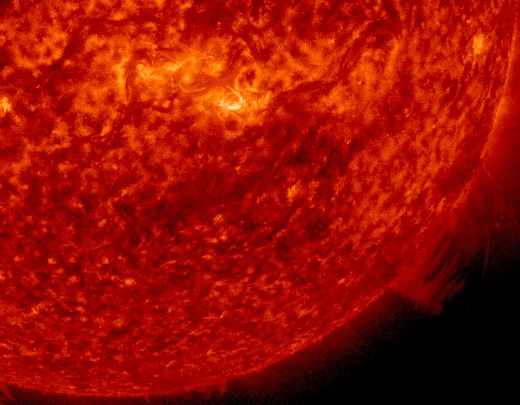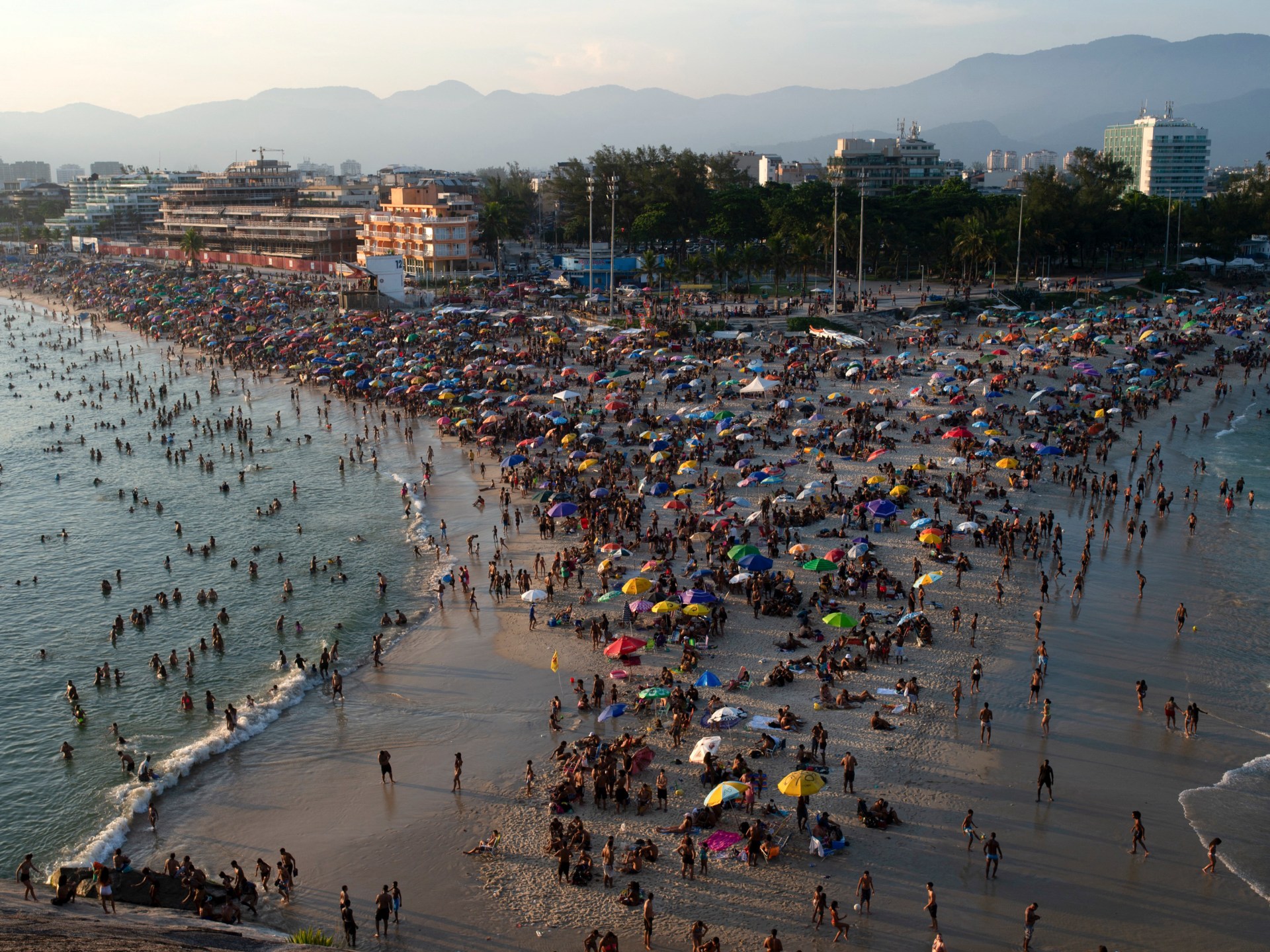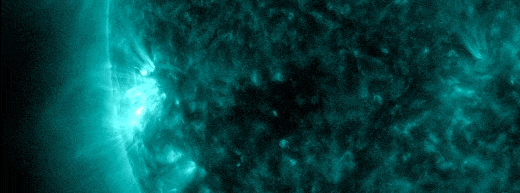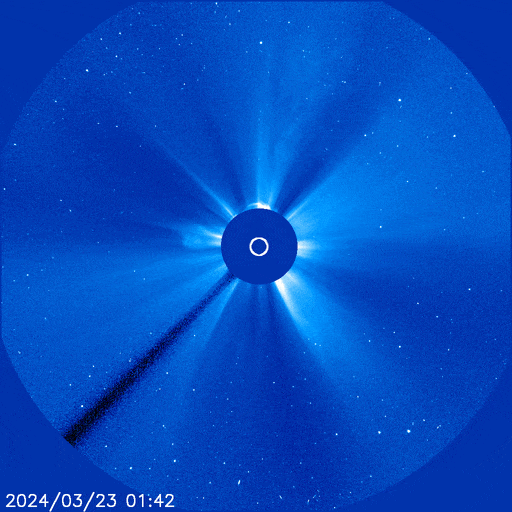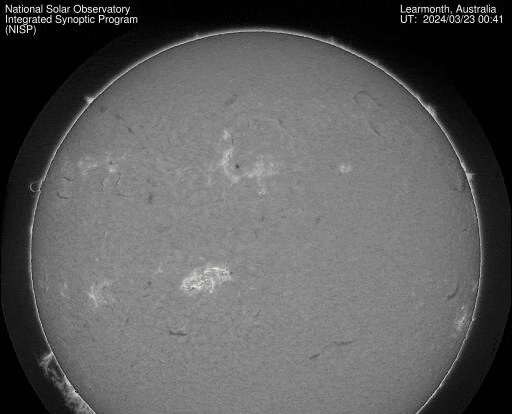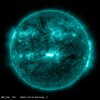SOLAR CYCLE 25 ACTIVITY REPORT MARCH 18_2024


● Auroral Activity

● Current Conditions at 04:31 UTC on March 18
▪︎ Geospace quiet (Kp 0)
▪Solar wind speed record: 290 km/sec (Normal speed)
▪︎ density: 1.88 p/cm³ (low density)
▪︎ Interplanetary Magnetic Field (IMF)
Bt: 4.89 nT
▪︎ X-ray Solar Flare : M2 0332 UT Mar18
▪︎ Thermosphere Climate Index
today: Warm
▪︎ Neutron Counts today: -2.9% (Low)
▪︎ Sunspot number: 86 (SN 67 Mar 17)
▪︎ Spotless Days 2023 total: 0 days (0%)
▪︎ A new coronal hole is emerging in the sun's southern hemisphere.
.......
SpaceWeatherlive.com
SpaceWeather.com
Solar activity has been at low levels for the past 24 hours. The largest solar event of the period was a C3.8 event observed at 05:47 UTC
The total number of sunspots has increased to 86 of which 28 of them are grouped into 7 active regions as follows: AR3606, AR3607, AR3608, AR3611, AR3612, AR3613 & new region AR3614

AR3610 is gone
The total number of sunspots has increased to 86 of which 28 of them are grouped into 7 active regions as follows: AR3606, AR3607, AR3608, AR3611, AR3612, AR3613 & new region AR3614
AR3610 is gone
LARGE SUNSPOT COMPLEX COMING OVER THE SOUTHEAST LIMB. It seems to be composed of many smaller spots so implies it may be a newly emerging region so could become active in the coming days. Keith Strong vía X
Active regions to keep an eye on and a partial halo CME observed following a filament eruption early Sunday. Solarham on X
NOAA has updated its forecas for the next 24 hours: 99% chance of C flares, 30% chance of M flares and 5% chance of X flares. All regions have stable magnetic fields.
● Auroral Activity
The geomagnetic field has been at quiet levels for the past 24 hours. On March 17 Solar wind speed reached a peak of 510 km/s (Moderately High speed) at 16:22 UTC No significant record on IMF
GEOMAGNETIC STORM WATCH (G1): A CME hurled toward Earth earlier today (see the "Canyon of Fire Eruption" below) could graze our planet's magnetic field on March 20th. The timing is perfect for equinox auroras at high latitudes. At this time of year, even a glancing blow from a CME can spark a geomagnetic storm thanks to the springtime Russell-McPherron effect SpaceWeather.com
CANYON OF FIRE ERUPTION: A large filament of magnetism stretching across the sun's southern hemisphere erupted today, carving a "canyon of fire" in the sun's atmosphere. NASA's Solar Dynamics Observatory (SDO) recorded the blast, which began around 0200 UT on March 17th:
Aurora Oval Bz: 2.42 nT NorthDebris from the explosion produced a partial halo CME recorded by SOHO coronagraphs. A NASA model of the storm cloud suggests it could strike Earth's magnetic field on March 20th, sparking high-latitude auroras on the first night of Northern Spring.
● Current Conditions at 04:31 UTC on March 18
The solar wind speed has reached a normal speed of 290 km/s. The interplanetary magnetic field (IMF) has no significant impact on the Earth's magnetic field. Two M flares have been recorded in the last hour. A M2.7 at 0332 UTC from AR3612 the flare generated a R1 radio blackout over Southeast Asia.


A second M1 occurred at 04:33 UTC from AR3614 the flare generated a Minor R1 radio blackout over Southeast Asia


The geomagnetic field is expected to be at quiet to unsettled levels for March 18
A second M1 occurred at 04:33 UTC from AR3614 the flare generated a Minor R1 radio blackout over Southeast Asia
The geomagnetic field is expected to be at quiet to unsettled levels for March 18
▪︎ Geospace quiet (Kp 0)
▪Solar wind speed record: 290 km/sec (Normal speed)
▪︎ density: 1.88 p/cm³ (low density)
▪︎ Interplanetary Magnetic Field (IMF)
Bt: 4.89 nT
▪︎ X-ray Solar Flare : M2 0332 UT Mar18
▪︎ Thermosphere Climate Index
today: Warm
▪︎ Neutron Counts today: -2.9% (Low)
▪︎ Sunspot number: 86 (SN 67 Mar 17)
▪︎ Spotless Days 2023 total: 0 days (0%)
▪︎ A new coronal hole is emerging in the sun's southern hemisphere.
.......
SpaceWeatherlive.com
SpaceWeather.com

